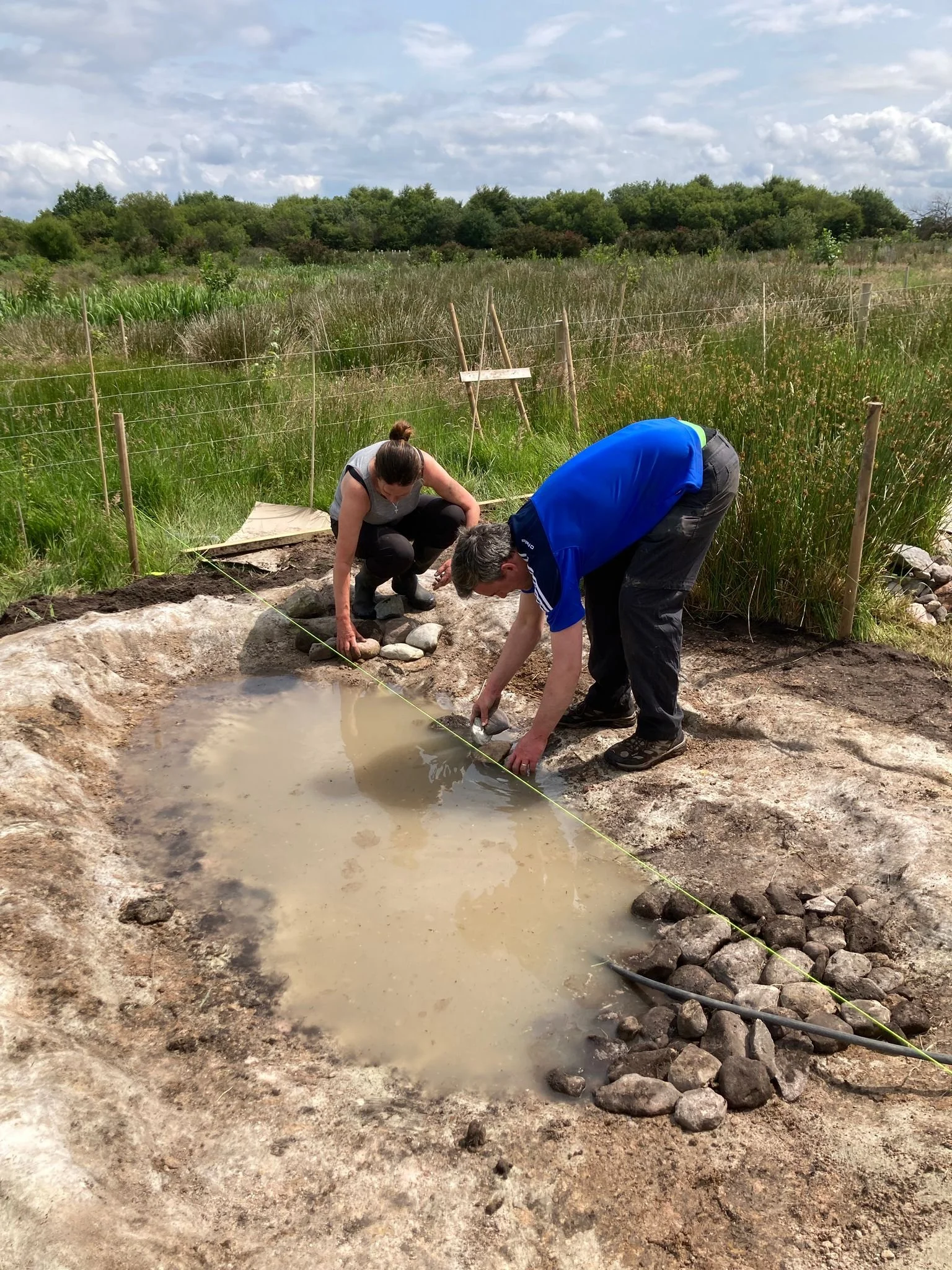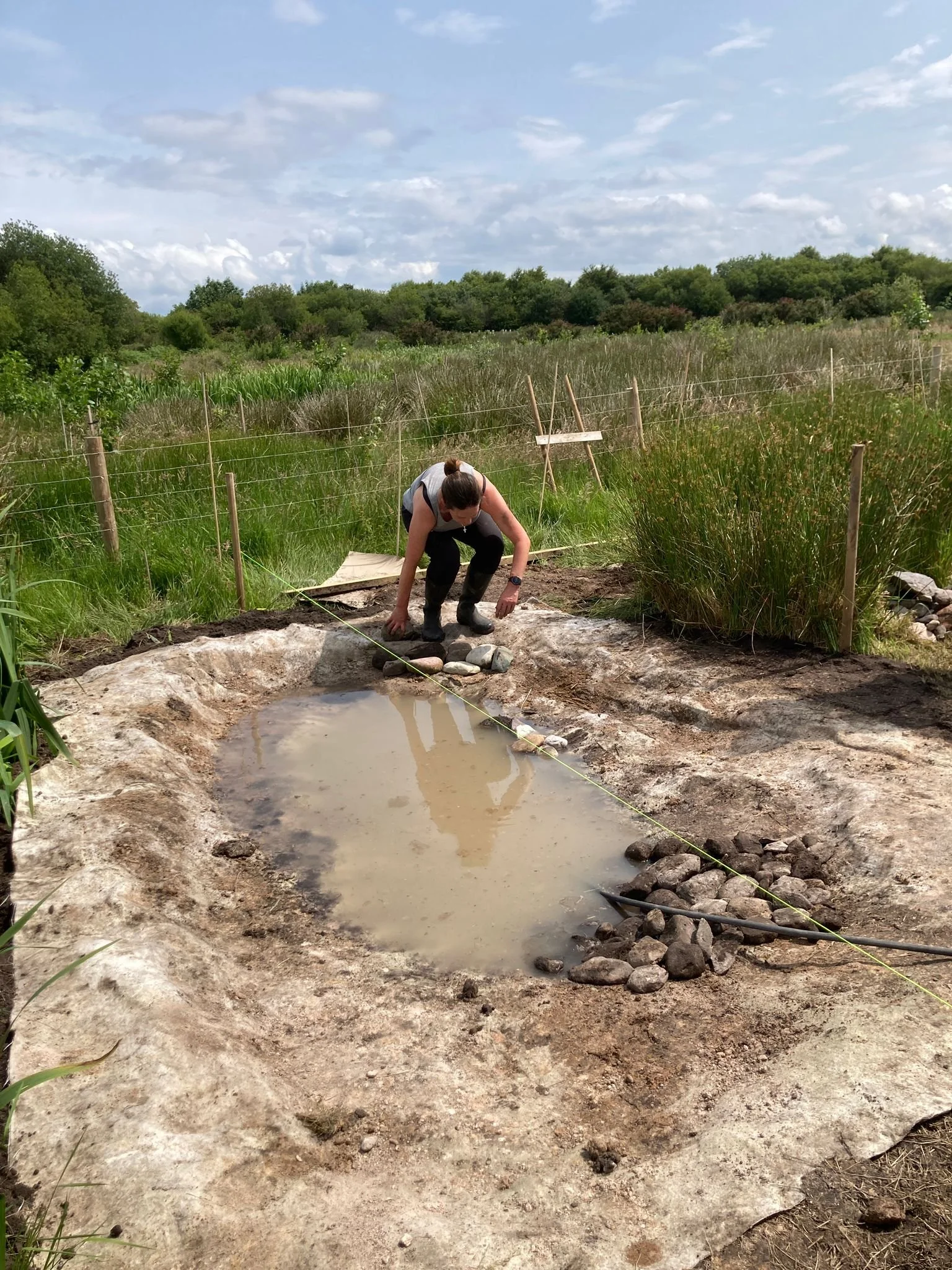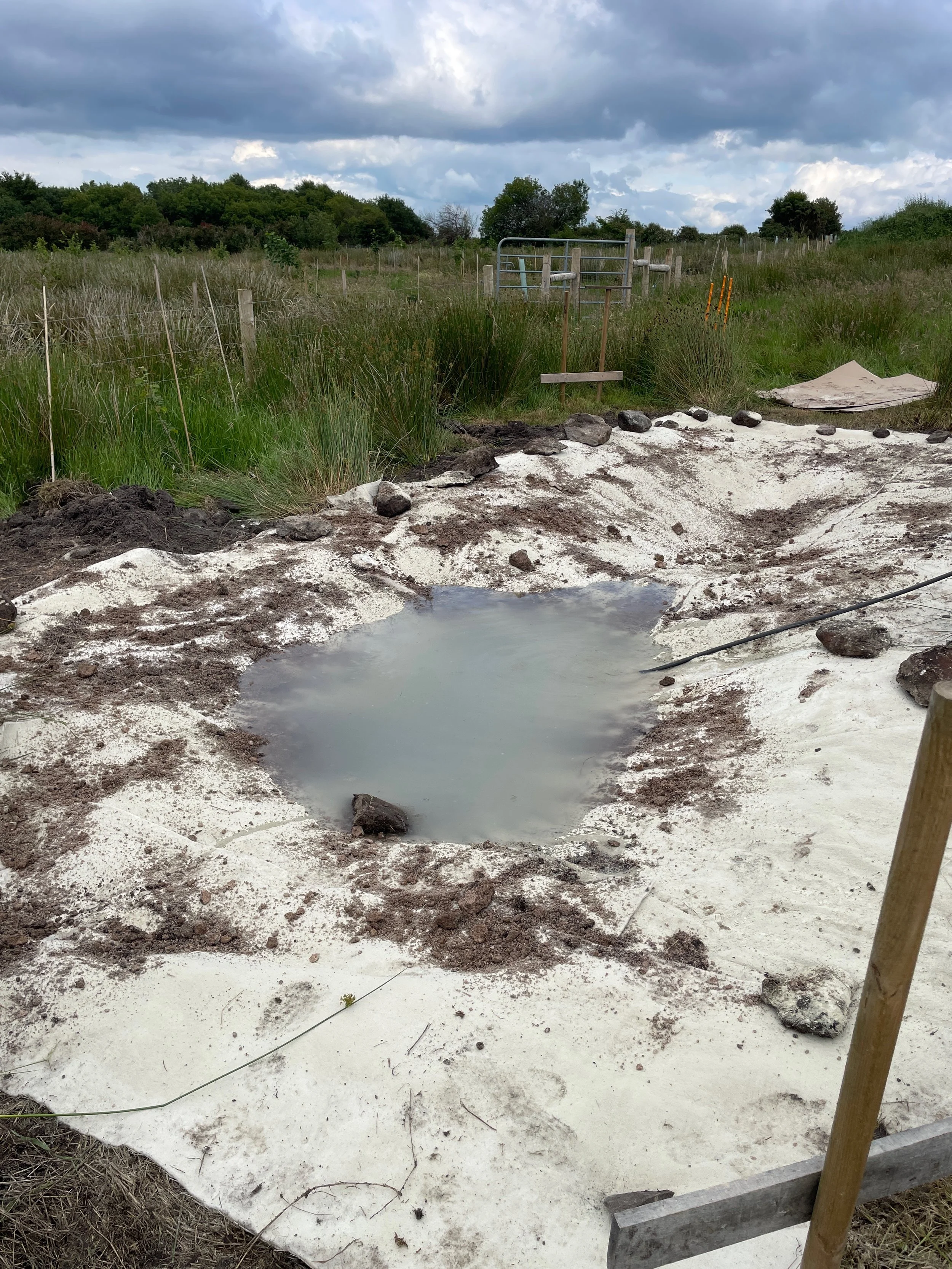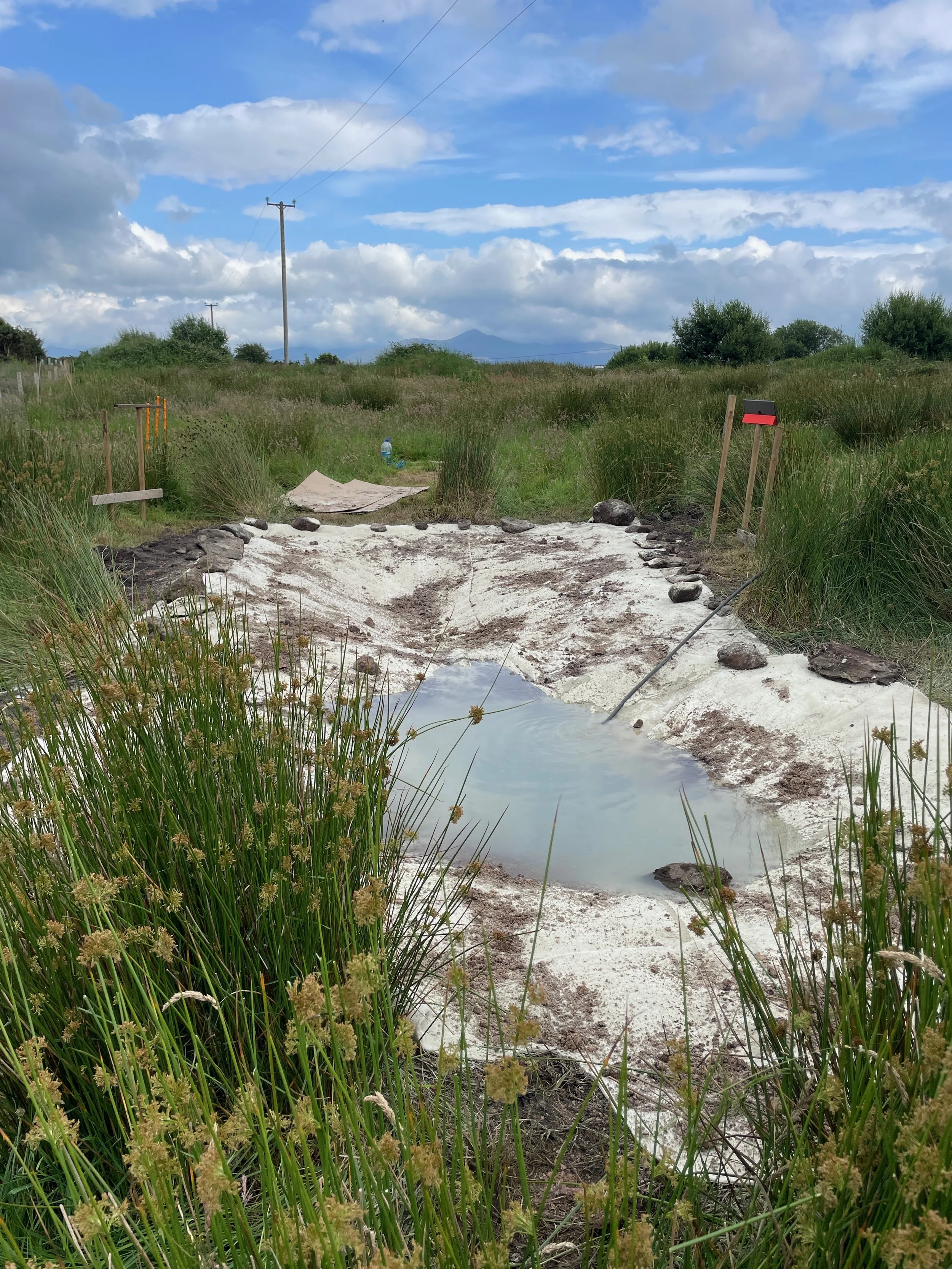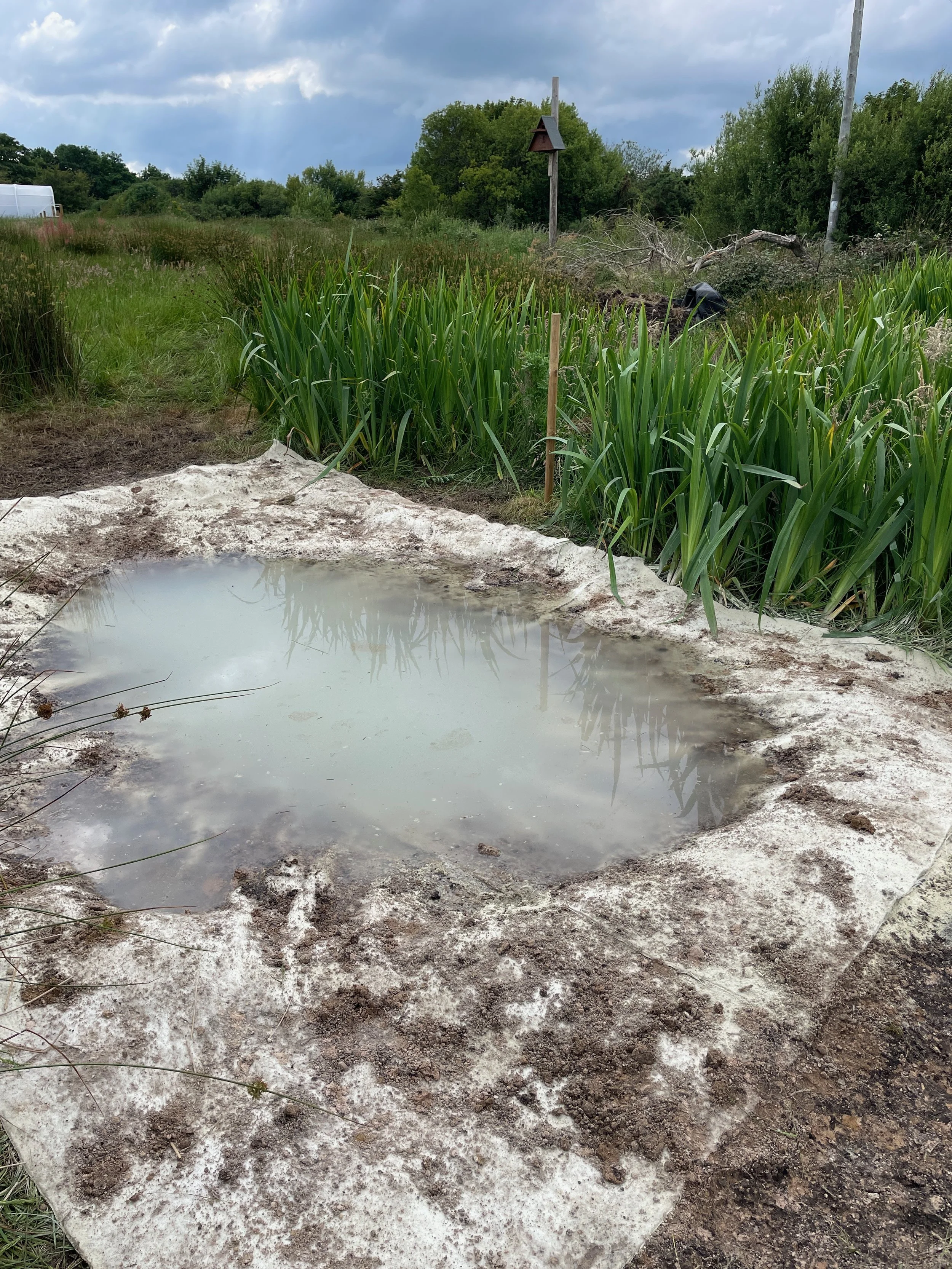Ponds - lots of learnings
From the first vague rumblings of an idea of local roots we’ve dreamed of ponds! Done right a ponds can be a wildlife haven. Somewhere for birds to bathe, frogs to hang out or a safe a hedgehog to go for a drink and a special place for people too.
A pond buzzing with life in a peatland restoration site in Mayo - June 2025 photo by Ciarán F.
With that in mind back, in 2023 when we were clearing back our drains and had a mini digger on site we set out to dig a natural pond. We used the digger and excavated down creating a shallow wide pond. Most of the life in a wildlife pond is in the top 20cm of the water. This shallow zone provides the highest levels of light and oxygen, which are crucial for aquatic plants, insects, amphibians, and small animals that rely on it for feeding, breeding, and shelter.
It seemed like we’d picked a good spot and even appeared that we’d discovered a natural spring as water bubbled up into our new pond. Soon it was full.
March 2024 unlined pond
By Feb 2025 we had great excitement with tadpoles in the pond and lots of interest from our younger volunteers. Unfortunately, as a product of the land beginning to dry out and a long dryish spell, the large ponds began to dry out.
Frogspawn and Tadpoles Feb 2025
By April our large pond was completely dried up. It was back to the drawing board for the ponds. Seasonal ponds that dry up in for example August can be quite beneficial but we needed something that could provide shelter and good conditions for the majority of the year. We definitely needed a pond that would not dry up in April!
We concluded that even though our soil seemed heavy we needed to line our ponds to retain water and create a better and more stable environment. A little research seemed to suggest that lining a pond with a form of clay called Bentonite could be the best eco friendly solution. Bentonite is a type of absorbent swelling clay, it’s plastic free and should give a very natural water retaining layer. It comes in a roll and looks a little like a carpet underlay.
As luck would have it a group from a local company Fexco were interested in a volunteer day so we set to work digging two new ponds and lining them with bentonite.
We filled our ponds and sat back in satisfaction…. BUT we’d not quite understood how bentonite pond liners work.
In reality bentonite only works if it sits below a layer of at least 30cm of soil. Due to a bit of a communication breakdown between ourselves and the nice people in geoline.ie we’d not realised this. Our ponds began to lose water again. On to attempt number 3.
We had some great ponds dug out so with support from Pat and Ann in geoline we tried again this time with a synthethic pond liner called EPDM. Whilst we’d tried very hard to not introduce additional plastic onsite we compromised in order to make use of all the hard work already put in.
View from a wildlife camera Nov 2025
Lots of work still to be done as we need to line the pond with stone/pebbles and cover up the EPDM so it does not degrade.
We should be just in time to give Spring 2026 tadpoles a safe place to occupy.






